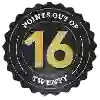
Winery Billecart-SalmonBrut Rosé Champagne
This wine is a blend of 2 varietals which are the Chardonnay and the Pinot noir.
In the mouth this sparkling wine is a powerful with a nice vivacity and a fine and pleasant bubble.
This wine generally goes well with pork, rich fish (salmon, tuna etc) or shellfish.
The Brut Rosé Champagne of the Winery Billecart-Salmon is in the top 70 of wines of Champagne.
Taste structure of the Brut Rosé Champagne from the Winery Billecart-Salmon
Light | Bold | |
Soft | Acidic | |
Gentle | Fizzy |
In the mouth the Brut Rosé Champagne of Winery Billecart-Salmon in the region of Champagne is a powerful with a nice vivacity and a fine and pleasant bubble.
Wine flavors and olphactive analysis
On the nose the Brut Rosé Champagne of Winery Billecart-Salmon in the region of Champagne often reveals types of flavors of pineapple, cream or cherry and sometimes also flavors of grapefruit, tropical or citrus.
Food and wine pairings with Brut Rosé Champagne
Pairings that work perfectly with Brut Rosé Champagne
Original food and wine pairings with Brut Rosé Champagne
The Brut Rosé Champagne of Winery Billecart-Salmon matches generally quite well with dishes such as recipes .
Details and technical informations about Winery Billecart-Salmon's Brut Rosé Champagne.
Discover the grape variety: Chardonnay
The white Chardonnay is a grape variety that originated in France (Burgundy). It produces a variety of grape specially used for wine making. It is rare to find this grape to eat on our tables. This variety of grape is characterized by small bunches, and small grapes. White Chardonnay can be found in many vineyards: South West, Burgundy, Jura, Languedoc & Roussillon, Cognac, Bordeaux, Beaujolais, Savoie & Bugey, Loire Valley, Champagne, Rhone Valley, Armagnac, Lorraine, Alsace, Provence & Corsica.
Informations about the Winery Billecart-Salmon
The Winery Billecart-Salmon is one of of the world's great estates. It offers 27 wines for sale in the of Champagne to come and discover on site or to buy online.
The wine region of Champagne
Champagne is the name of the world's most famous Sparkling wine, the appellation under which it is sold and the French wine region from which it comes. Although it has been used to refer to sparkling wines around the world - a point of controversy and legal wrangling in recent decades - Champagne is a legally controlled and restricted name. See the labels of Champagne wines. The fame and success of Champagne is, of course, the product of many Complex factors.
The word of the wine: Part
Name of the barrel used in Burgundy (capacity of 228 litres).









